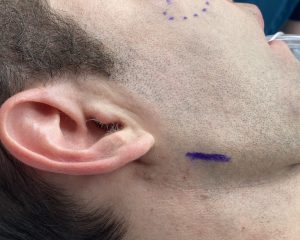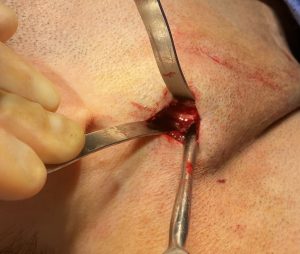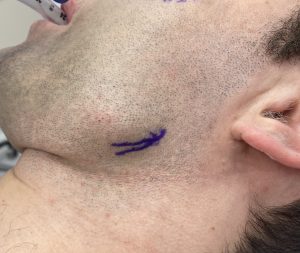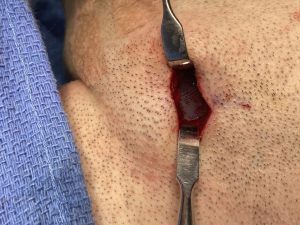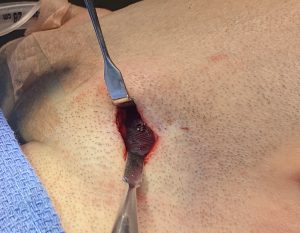Background: Of all facial areas to aesthetically enhance with implants the jaw angles are the toughest area to do so. There are multiple reasons why this is so but it comes down to lack of good visibility with the intraoral access used and that this is where the insertion is for the masseter muscle. Getting an adequate pocket for the implant with adequate masseter muscle insertion elevation is the key…and being able to do so without creating masseter muscle dehiscence up over the implant is the challenge.
What makes this so challenging is that the location of the muscle insertion is as far away from the intraoral incision as can be. And the intraoral incision is already fairly far back in the mouth. As a result the working end of the implant is exactly where it can not be visualized intraorally. This makes it hard to know if the location of the working end of the implant (where the implant exerts its maximal effect) is properly located over the bony jaw angle. There is no other facial implant which as this exact set of challenges and accounts why the isolated jaw angle implant or the jaw angle portion of a custom wrap around jawline implant have the highest rates of postoperative malposition.
When jaw angle implant malposition is evident the only corrective approach is surgical repositioning which is most commonly back through the original intraoral incision. But there is an alternative approach which is provides the best visualization of the back end of the bony jaw angles and the working end of the jaw angle implant. This is the direct approach through a small incision right over/behind the bony jaw angle.
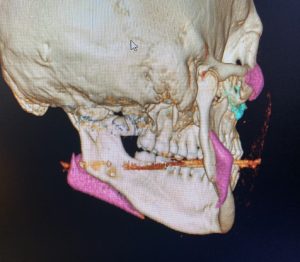
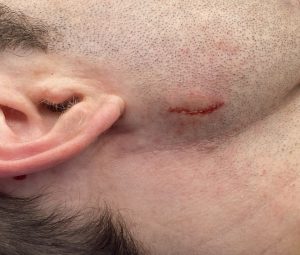
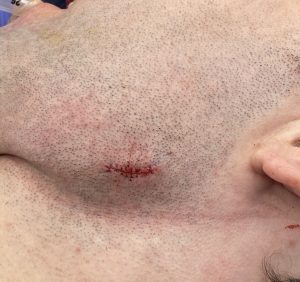
When doing any secondary facial implant repositioning I would not do it unless you had a 3D CT scan to fully understand exactly where the implant is located and exactly how it must be moved to its intended position. Don’t guess…guessing is just as likely to lead to another surgery for further repositioning.
Once good knowledge of where the implant is and what is required to reposition it the next question is how to do it. While almost every other facial implant is going to be accessed through the original placement incision jaw angle implants are unique. If it is an exceptionally challenging one the direct jaw angle incision offers the best method to do so. It also has a much lower risk of infection by avoiding going inside the mouth and usually a better recovery with no intraoral healing wounds.
There have been many external skin incisions used to access the jaw angle area. The most known and used is the Risdon incision, a high neck incision placed in a horizontal neck line. Others have included the submandibular, retromandibular, and the modified Risdon incisions. All strive to provide good access for bony jaw angle and condylar surgery usually for fractures and/or reconstruction. The direct jaw angle incision is unique amongst these incision because of its small size and direct location over the jaw angles. At only one centimeter in length it provides enough access for jaw angle implant work while safely staying well above the more inferior location of the marginal mandibular branch of the facial nerve. It is an incision that causes minimal scarring and is a good tradeoff for some patients with difficult jaw angle implant positioning problems.
Case Highlights:
1) Jaw angle implant malposition is not rare given the masseter attachments and the need to position the implant at the furtherest distance from the intraoral access incision
2) In challenging secondary jaw angle implant repositioning the direct jaw angle incision provides the most assured visualization of the implant-bony relationship.
3) Jaw angle implants can be unscrewed and resecured with screws through the direct jaw angle incision.
Dr. Barry Eppley
Indianapolis, Indiana




